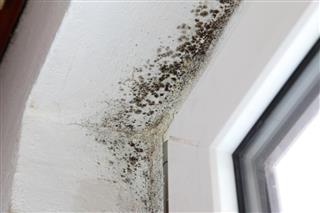
The growth of black mold on drywall is worrisome, both from aesthetic as well as from a health point of view. Here’s a way by which you can remove black mold.
Black mold growth on drywall usually occurs due to dampness and humidity. If you notice that your drywall is affected with black mold, you need to assess it properly. This is because you have to identify whether the black mold is light or extensive so that you can accordingly decide to remove it. Black mold removal from drywall is easy, if it is just a speckling over its painted surface. Though most of the mold growths do not contain dangerous mycotoxins, they can trigger allergies like sneezing, asthma or cold-like symptoms in susceptible people. In case the drywall is not painted, it has to be replaced, as you will never be able to get the mold removed from inside the drywall. Here are some directions on black mold removal from drywall. Just follow the steps given below and see the results.
Black Mold Removal
Procedure of Removing Black Mold from Drywall
Step 1
Wear a respirator to protect yourself from the disturbed mold spores. Also, wear eye protection gear, especially, if you are working on a ceiling. Put on the gloves. Cover the surrounding surfaces like fabrics and carpets using plastic and mask tape.
Step 2
Sand the surface of any wood studs attached to moldy drywall to completely remove visible mold. Only scrubbing the wood is not enough for removal of black mold from drywall.
Step 3
Add two spoons of dish washing detergent to one bucket of clean water. Dip a cleaning cloth in this water; wring it and use it to clean the affected area. Now rinse the area with clean water, and then dry it using a dry towel.
Step 4
After the procedure is over, there might be some discoloration of the drywall. You can repaint it using a paint containing additives that prevent mold growth.
Precautions Against Black Mold
Remember that after the mold growth is cleaned off from the drywall using the aforementioned procedure, it might grow back. So you need to take some precautions to avoid this. Install a venting system or a dehumidifier if the mold keeps recurring in the area because mold thrives in humid environment. Fix all the exposed and concealed leaky pipes because these pipes can generate moisture and promote toxic black mold growth. To detect leaks in the concealed areas you can look for signs of drywall warping, discoloration, loose drywall tape and swollen edges. Also, checking whether your water meter is not registering water usage when everything is turned off will help you. You must have a slight positive pressure in your home interior, that is the intake air has to be slightly more than the exhaust air. Moisture and pollutants will be drawn into your home if you have a negative pressure. Remember, too much positive pressure can push undue moisture into the cavity and structural spaces of your house, leading to an atmosphere suitable for the growth of black mold.




